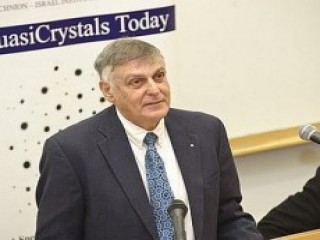
Dan Shechtman biography
Date of birth : 1941-01-24
Date of death : -
Birthplace : Tel Aviv, Israel
Nationality : Israeli
Category : Science and Technology
Last modified : 2011-10-11
Credited as : chemist, scientist, Nobel prize for chemistry 2011
2 votes so far
Dan Shechtman is born on January 24, 1941 in Tel Aviv, Israel. He has received the Nobel Prize 2011 for his discovery of the chemical structure called as the quasicrystals.
Dan Shechtman faced lot of controversies and ridicules initially when he first discovered the quasicrystals. A lot of questions were raised with his invention.
Dan Shechtman decided to lay all the queries to rest by proving his point.
What are Quasicrystals?
In every metal, atoms are arranged in a typical symmetrical form. Dan Shechtman discovered that the atoms had crystal structures in frozen gobbets of metal that had beautiful patterns, similar to those found on Islamic mosaics. He found that the atoms were arranged in such a way that they broke the rules of how crystals are formed and altered the views of other scientists.
It was always believed that metals had crystallised materials were usually made up of unit cells of atoms that are repeated to form a single uniform structure. However, Dan Shechtman was busy examining a rapidly cooled metal alloy. He found that the atoms packed in this alloy were in a pattern that could not be repeated. He named these structures as quasicrystals.
The quasicrystals are found in almost every metal and these quasicrystals have an uneven structure which means they do not have obvious cleavage planes thereby making them particularly hard in nature.
According to Prof Dan Shechtman, quasicrystals are likely to be used in protective coatings and future alloys.
Scientists all over the world believed that metals contained atoms that repeated their patterns. For instance a square lattice has fourfold symmetry. No matter how you rotate it, it will look identical. The symmetry stays the same and the fourfold cannot turn into fivefold. However, Dan Shechtman discovered a new dimension called as quasicrystals and found out that the symmetry can possibly change. With this discovery, the definition of crystals had to be changed.
A crystal ideally meant something that was regularly ordered and repeated its dimension pattern. However, quasicrystals do not repeat their pattern and the new definition states a solid with discrete diffraction diagram. In other words, a solid that produces different patterns similar to the ones that Dan Shechtman saw.
















